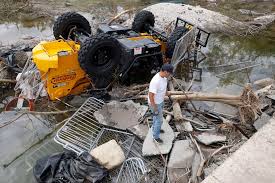Nestled in the flood-prone Hill Country of Texas, Kerr County has long been vulnerable to the sudden and devastating effects of flash flooding, particularly along the Guadalupe River. Despite the area's repeated encounters with catastrophe and a decades-long conversation about preparedness, a comprehensive flood warning system has yet to be fully realized. As of 2025, more than 110 lives have been lost statewide due to flooding, highlighting the urgency of examining past decisions and present shortcomings in Kerr County’s approach.
The need for a formal warning system in Kerr County can be traced back to 1987, when a flash flood took the lives of ten teenagers. Since then, the idea has resurfaced repeatedly, gaining significant attention in March 2016 when Commissioner Thomas Moser and Emergency Management Coordinator Dub Thomas presented the concept at a commissioners’ meeting. Moser underscored the gap between Kerr County’s limited monitoring capabilities and the more sophisticated systems of neighboring areas, despite its heightened flood risk.
In the years that followed, the issue was discussed in at least 20 public meetings. Yet progress was stymied by a lack of federal funding and resistance from some county officials. Critics often cited the projected $1 million cost and voiced skepticism about the utility of sirens, concerns about maintenance, and fears that such systems would disrupt the county’s rural character. One commissioner famously dismissed the idea by saying that the sound of sirens would make him "start drinking again."
The proposed system was designed to be comprehensive and technologically integrated. It included high-water detection sensors, rainfall gauges, automatic road barriers, web-based data platforms, and outdoor warning sirens, in addition to CodeRED alerts already in use to deliver warnings via phone, text, and email. Despite the system’s sophistication, the loudest opposition centered around the sirens, with some residents fearing false alarms and unwelcome noise intrusions.
In the absence of a formal warning system, Kerr County has leaned on informal networks such as “river calling”—a manual phone-based system used to warn summer camps and riverside neighborhoods of rising waters. However, during the 2025 floods, Ingram Councilman Ray Howard criticized its limitations, saying, “Obviously calling from one place to another isn’t fast enough.” Nonetheless, some county officials maintained that existing measures, including CodeRED and river calling, were sufficient, and they continued to argue against further spending or system expansion.
The unprecedented flooding that struck Texas in July 2025, causing numerous deaths statewide, brought renewed urgency to the issue. In April of that year, the Upper Guadalupe River Authority (UGRA) approved a contract with the firm Kisters to begin developing a flood warning system, committing up to $73,000 for the project. However, the status of the initiative remains uncertain, and residents await concrete progress.
Kerr County’s long and often frustrating debate over flood warning infrastructure reflects a broader challenge faced by many rural communities: how to reconcile safety needs with fiscal limitations and local values. Although technical solutions have been on the table for years, they have repeatedly been sidelined by concerns over cost and cultural identity. Whether the tragedies of 2025 will finally catalyze meaningful action remains to be seen—but for a region as flood-prone as Kerr County, the stakes have never been higher.







.png)

No comments:
Post a Comment